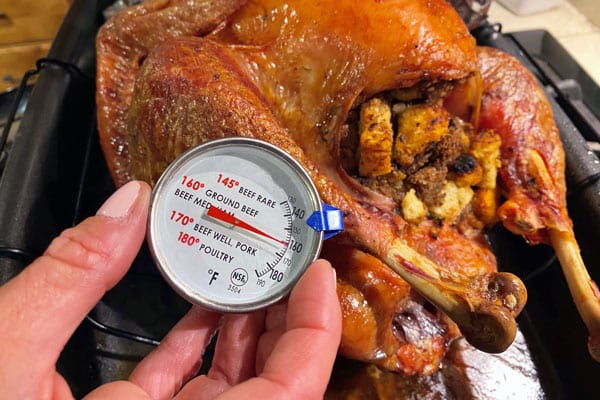Thanksgiving Dinner: How to Prepare Your Turkey and Trimmings Safely

If you're taking on the responsibility of preparing the Thanksgiving turkey, it's crucial to prioritize safety.
Are you preparing Thanksgiving dinner?
Thanksgiving is a time for gratitude, family gatherings, and, of course, a delicious feast. Unfortunately, mishandling your turkey and trimmings can lead to foodborne illnesses that can spoil the holiday for you and your loved ones.
Let's explore four essential steps recommended by the Centers for Disease Control and Prevention (CDC) to help ensure your Thanksgiving meal is safe and delicious for everyone.
#1. Thaw Your Turkey Safely.
One of the first steps in turkey preparation is thawing, and it's vital to do it safely to prevent harmful bacteria growth. Here are three CDC-recommended methods to thaw your turkey:
Refrigerator Thawing:
Place your turkey in its original wrapping inside a container and store it in the refrigerator. Allow about 24 hours of thawing time for every 4-5 pounds of turkey. For instance, a 15-pound turkey will need 3-4 days in the fridge.
After thawing, your turkey can remain refrigerated for up to two additional days before cooking.
Cold Water Thawing:
Ensure your turkey is in a leak-proof plastic bag before immersing it in cold tap water in your sink. Change the thawing water every 30 minutes to promote a continual thawing process.
Allow about 30 minutes of thawing for every pound of turkey. For a 15-pound turkey, this would take approximately 7-8 hours. A turkey thawed in cold water must be cooked immediately after thawing.
Microwave Thawing:
If you opt for this method, follow the microwave manufacturer's instructions for thawing turkeys. Like cold water thawing, a turkey thawed in the microwave must be cooked immediately after thawing.
#2. Handle Your Turkey with Care.
Raw turkey and its juices can carry harmful bacteria, so handling your turkey correctly is crucial to prevent contaminating kitchen surfaces and food items. The following tips can help you in this effort:
Hand Hygiene:
Wash your hands with soap and water for at least 20 seconds before and after handling the turkey.
Separate Surfaces:
Use a separate cutting board exclusively for raw turkey. Never allow the raw turkey or its juices to come into contact with cooked food or fresh produce that's ready to eat.
Sanitization:
After preparing the raw turkey, wash cutting boards, utensils, dishes, and countertops with soap and hot water before moving on to the next item. Avoid washing or rinsing the raw turkey, as this can increase the risk of bacteria spreading to other foods.
#3. Cook your turkey thoroughly.
Proper cooking is the key to a safe and delicious Thanksgiving meal. Follow these recommendations for roasting your turkey.
Temperature Setting:
Set your oven temperature to at least 325°F.
Roasting Pan:
Place the completely thawed turkey in a roasting pan 2 to 2 ½ Inches deep. Cooking times depend on the turkey's weight and whether it's stuffed.
Use a Food Thermometer:
Use a food thermometer to ensure your turkey and stuffing reach a minimum internal temperature of 165 degrees.
Be sure to check the temperature in the stuffing's center and the thickest parts of the breast, thigh, and wing. This will help ensure the turkey and stuffing are cooked thoroughly and safe to eat.
Even if your turkey has a pop-up timer, using a food thermometer is still advisable.
Resting Time:
Allow the turkey to stand for 20 minutes before carving. This practice makes the turkey easier to carve and ensures that it's cooked thoroughly.
#4. Take Care of Leftovers
One of the joys of Thanksgiving is indulging in leftovers. To keep them safe for consumption, remember these guidelines.
Prompt Refrigeration:
Refrigerate leftovers at 40°F or colder within 2 hours of cooking to prevent food poisoning.
Slice for Cooling:
Slice larger cuts of meat into smaller pieces before refrigerating. This allows them to cool quickly.
Reheating:
When serving leftovers, reheat them to at least 165°F to ensure they're safe to eat.
Safety Comes First!
Remember: Safety should always be a top priority as you prepare to celebrate Thanksgiving with your loved ones.
All of us at the Moultrie County Health Department wish you and your loved ones a safe and happy Thanksgiving holiday!

